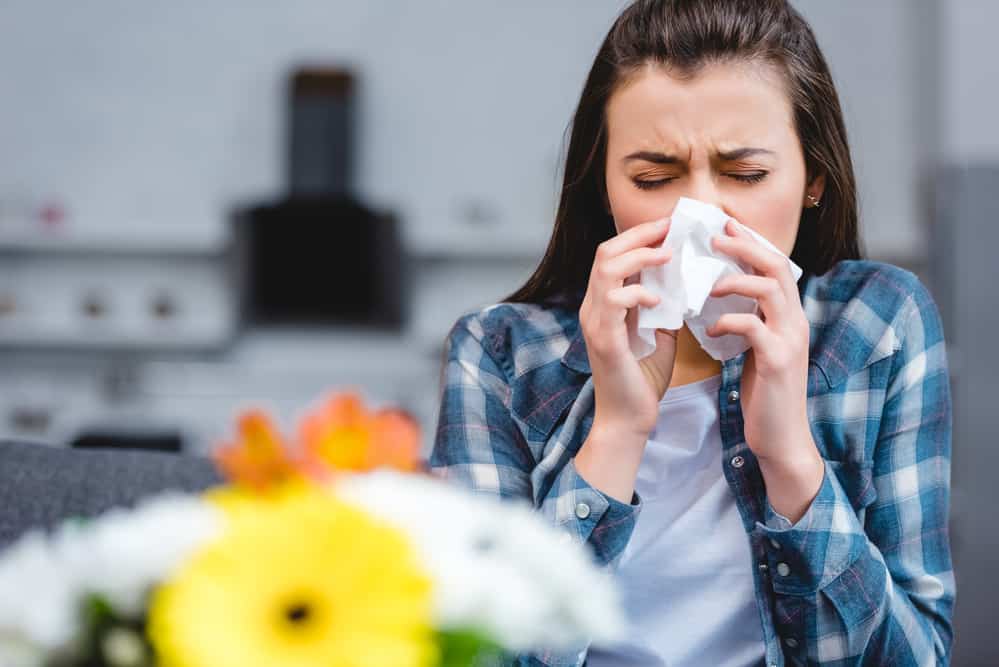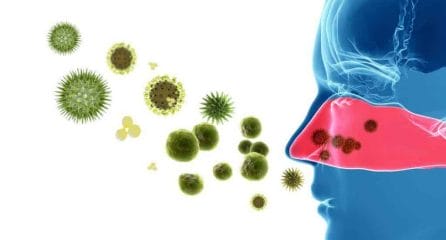
Allergy – its triggers, types and treatment methods
It would be hard to find someone who, at least, hasn’t heard of allergy, and the number of people complaining about its troublesome symptoms is growing every day. It can be safely considered one of the most common diseases of civilization in the 21st century, and its treatment is longprotracted, requiring a great deal of self-denial and regularity if it is to produce the desired results. There are many ways to cope with it once and for all, you can either use drug treatment or natural methods that are less harmful to the body.
Contents
How is the term allergy defined?

Allergy is a disease found in adults of all ages, as well as in children, for whom allergy symptoms are extremely unpleasant, sometimes even preventing them from functioning normally. They are particularly annoying during the summer months, when pollen is in the air, although this is not the only cause of the disease. Before addressing the others, we should first learn what an allergy is and what its symptoms are.
Allergy is defined as an abnormal, often very violent, reaction of the human immune system of the immune system to substances foreign to it called allergens, and its name is formed from the combination of two Greek words, “allos”, meaning different, and “ergon”, meaning action. Such reactions are simultaneously indicative of dysfunction in the body. T lymphocytes and IgE antibodies normally attacking only the viruses or bacteria that threaten us, begin to “attack” seemingly harmless substances found in the air or in food.
What are the most common causes of allergies?
Allergy is a disease that is difficult not only to treat, but above all to diagnose properly, given the huge number of potential allergens that can cause its symptoms, The scary thing is that it could be practically anything, which is why it takes so long for tests to confirm what factors are causing the allergy, and does not always succeed in pinpointing them.
However, there are several groups of substances considered allergens and most often attacking our immune system, which we can divide according to the environment of occurrence, and here we distinguish:
Allergens of food origin:
Getting into the body together with what we eat, and the following foods can pose the greatest threat:
- cow’s milk proteins;
- chicken egg whites;
- cow’s milk;
- fish, mollusks and shellfish;
- wheat containing gluten and products made from it;
- soy;
- nuts and almonds, and allergy sufferers should be especially wary of peanuts;
- rice;
- certain fruits, especially citrus fruits, bananas, apples, cherries and peaches;
- certain vegetables, especially tomatoes, carrots, potatoes and celery;
- chocolate and chocolate products.
Inhalant and animal allergens
As the name suggests, entering the respiratory system together with the inhaled air, we divide them into two subgroups, seasonal ones occurring only during certain periods of the year, and permanent ones, posing a year-round threat. The most serious threats to allergy sufferers are:
- pollen from certain flowering plants;
- pollen from grasses and trees;
- mold spores;
- house dust mites;
- animal dander, mainly from pets, cats and dogs;
- natural feathers;
- wool;
- insect venom, e.g., ants, wasps, hornets and bees.
Allergens from the environment
Industrial development has given rise to a whole new group of substances that can cause severe allergic reactions, also resulting from the progressive pollution of the environment, and include:
- latex;
- rubber;;
- other plastics;
- metals, primarily lead, zinc, cobalt, chromium;
- artificial dyes and preservatives;
- UV radiation.
These are just three of the most important groups of allergens, in addition to them there are others such as cross or contact allergens. In the first case, an allergic reaction occurs when two or more substances that seemingly have nothing in common are combined . In the second, the factor that triggers it is the contact of a specific allergen or more of them with the skin, that is, it can be said that it works through touch.
What characteristic symptoms of allergy can we encounter?

Allergy is not a uniform disease, just as the causes that cause it are divided into several varieties, depending on which factors, from those described above, cause it. Allergy specialists, however, point to certain allergy symptoms characteristic of each variety, and sufferers usually complain of:
- gastrointestinal complaints, nausea, severe abdominal pain, bloating, constipation, diarrhea, vomiting;
- swelling and skin lesions;
- urticaria and accompanying rash;
- atopic and contact dermatitis;
- shortness of breath;
- cough;
- hay fever, sometimes persisting for years;
- swelling of the tongue, throat and larynx;
- allergic rhinitis causing difficulty breathing;
- feelings of irritability and nervousness;
- sleep problems, even leading to chronic insomnia;
- impaired concentration;
- redness, irritation, stinging and tearing of the eyes.
As you can see, there are quite a few symptoms, of course, they rarely occur all at once, but sometimes their severity can be so great that they can cause anaphylactic shock. This term is used to describe an exceptionally severe allergic reaction, a condition that is no longer only health-threatening, but also life-threatening, manifesting itself, among other things:
- a sharp drop in blood pressure;
- palpitations;
- a feeling of shortness of breath;
- difficult-to-control coughing and nasal leakage;
- dizziness;
- vomiting;
- weakness leading even to fainting.
Which allergy treatments are most commonly used?
Allergy is not a condition that can be ignored, it seriously hinders life and it is worth finding effective methods of dealing with it. As soon as we notice its symptoms in ourselves, the first steps are directed to a specialist to diagnose what factors are responsible. He orders the appropriate examinations and tests, which can unfortunately take a very long time, and at the end assigns the appropriate specifics, and mostly used are:
- antihistamines, which remove the most bothersome allergy symptoms;
- epinephrine;
- drugs that activate the alpha- and beta-adrenoceptors, which have an anti-allergic effect;
- glucocorticosteroids.
The effectiveness of anti-allergic drugs, especially antihistamines, certainly cannot be faulted, but their use involves accepting a fair number of side effects, and common ones include:
- drowsiness or the opposite, disorders that prevent sleep;
- nightmares;
- feelings of fatigue, distraction and irritability;
- dizziness and headaches;
- stomach disorders, diarrhea and vomiting;
- heart rhythm disturbances;
- skin symptoms, itching, irritation and rash;
- swelling of the throat, tongue, esophagus and even the entire face, causing difficulty breathing.
Can allergies be dealt with by natural methods?

So it’s worth considering whether allergies can be dealt with by other methods that don’t have as many disturbing side effects. Fortunately, there are natural ways to bring its symptoms under control, already used by our Mothers and, in many cases, even by Grandmothers. Contrary to appearances, their effectiveness is also high, and proponents of natural, home allergy treatment recommend them:
Herbalism
Otherwise known as phytotherapy, the cornerstone of natural medicine, and there are many herbs and plants with properties that can quickly relieve most allergy symptoms. Among the most popular and widely recommended, it is worth mentioning such as:
- nigella, specifically the oil made from it, the most effective in dealing with different varieties of allergies. This is facilitated by its composition full of fatty acids, vitamin A, B vitamins and vitamin E, supported by magnesium, selenium, calcium, zinc, potassium, iron and sodium. It quickly clears up most respiratory allergic symptoms by shrinking mucous membranes in the nose and throat and skin. It reduces histamine secretion at the same time, can be used orally, on the skin and as an infusion for inhalation, and most importantly, cumin has no side effects;
- chamomile, a natural antihistamine, and the content of a unique substance, the essential oil chamazulene, which effectively inhibits the overproduction of histamine, and in addition to its anti-inflammatory and antibacterial effects, is responsible for this effect. Chamomile can also be used externally, as it soothes eye irritation and conjunctivitis, two symptoms that occur with hay fever;
- yarrow, a plant whose medicinal properties have been known since antiquity. It has a rich composition, full of health-promoting essential oils, choline, vitamin C, potassium, magnesium and zinc. Like chamomile, it contains chamazulene, which blocks the excessive secretion of histamine and thus also the possibility of allergies. It also helps reduce the sensation of its symptoms, and has anti-inflammatory, analgesic and antiseptic properties, especially useful for skin reactions;
- St. John’s wortherb, and the treatment of allergies is aided by its antibacterial properties that allow it to get rid of many of the microorganisms that cause it. Vitamin A, found in it, accelerates the healing of wounds and skin irritations, its diseases such as AD, atopic dermatitis, one of the symptoms of allergies. Equally beneficial is the presence of vitamin C, a powerful antioxidant that removes free radicals, inhibits violent and dangerous histamine secretions, and also aids in the treatment of inflammation, such as throat irritated by allergens or rhinitis.
Proper selection of nutrients in the diet
The importance of a properly selected diet probably does not need to be reminded to anyone. Among other things, it allows, along with a daily dose of physical activity, to avoid overweight and obesity. However, if the diet is to protect us from allergies, then in addition to removing the above-mentioned food groups from the diet, what we are allowed to eat must include such nutrients as:
- vitamin B5, or pantothenic acid, involved in the production of antibodies necessary for the immune system to cope with bacterial or viral infections;
- vitamin E, the popular “vitamin of youth” that guarantees healthy skin, which should be supplemented several months before the pollen season to benefit from its full anti-allergic properties.
Removing allergic agents from the home
It would be difficult to imagine removing allergens from outdoor public places, but eliminating them from the home already does. Of course, we won’t remove them completely, but people susceptible to allergic agents should clean their surroundings more thoroughly. You need to remove dust several times a week with special cloths, vacuum the floors with a vacuum cleaner with an HEPA filter and use hypoallergenic cleaning and personal hygiene products , e.g. dish or floor washing liquids, hair shampoos and shower gels.
Sources:
- https://www.healthline.com/nutrition/common-food-allergies
- https://www.healthline.com/health/allergies
- https://www.healthline.com/health/tips-living-dangerous-allergies
- https://www.healthline.com/health/common-childrens-allergies
- https://www.healthline.com/nutrition/common-food-allergies



